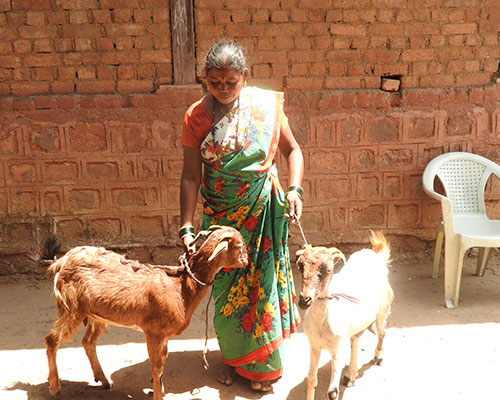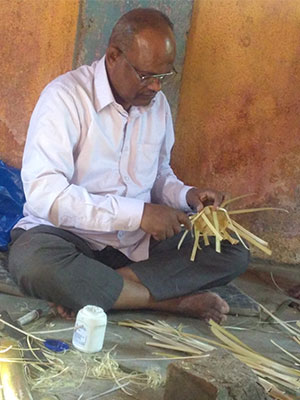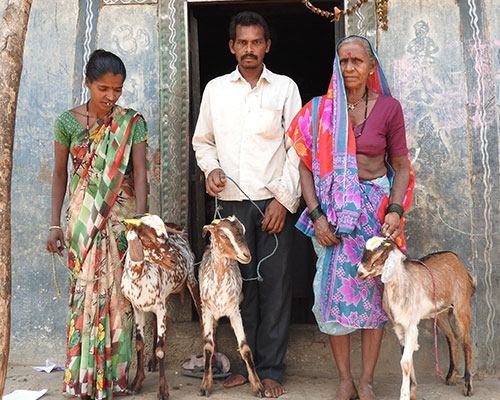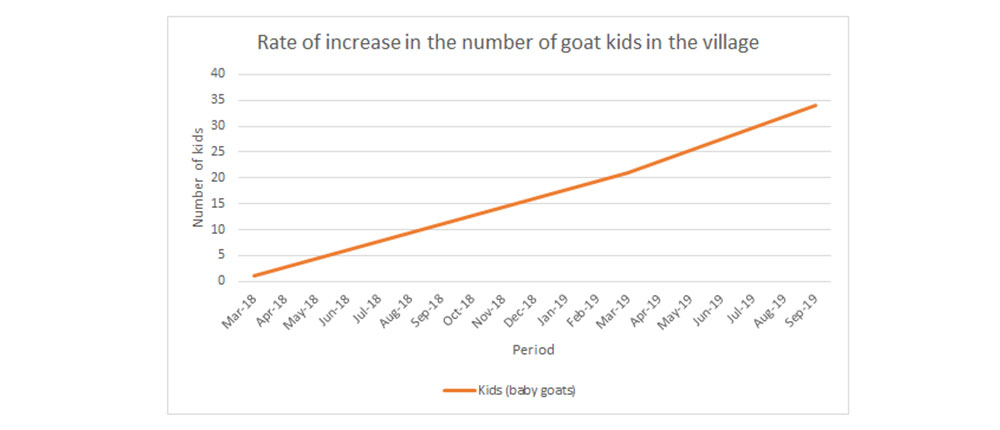Sustainable Communities
Bioprospecting
Sustainable Communities
- Livelihood Support and Nutritional Security through Food Processing and Fortification
- Nutritional Security and Livelihood Support through Off-farm Livelihood initiatives
- Nutritional Security through Nutri-Gardens and Food Fortification
- Developing Pathardi in Palghar District into a Sustainable Village
- Canteen for Teens - Focusing on "Know, Grow and, Cook your own food" for Urban Youth
- Urban Farming - A Sustainable Approach for Urban Nutrition
Nutritional Security and Livelihood Support through Off-farm Livelihood initiatives Duration: 2017- 2018 Sponsor: GKN Sinter Metals Pvt. Ltd
- Full Report on the Nutritional Security and Livelihood Support through Off-farm Livelihood initiatives Project
- Project Highlights (PPT)
 A woman with goats owned by her
A woman with goats owned by her The absence of food insecurity does not necessarily mean that an individual is nutritionally secure, the nutritional value of the food available is of utmost importance. A host of health, environmental, cultural and behavioral factors determine the nutritional benefits of the food consumed. Livelihood insecurity is one of the main socio-economic factors influencing food and nutrition security as it deeply deteriorates the capacity of a household to have access to nutritious food. Household livelihood security is defined as adequate and sustainable access to income and resources to meet basic needs , and is thus a pre-requisite to nutritional security.
Need for livelihood security
 Bamboo article making workshop in progresss
Bamboo article making workshop in progresss After successfully planning and executing initiatives focused on improving the nutritional status of the villagers, TERI recognized the need for the generation of sustainable livelihood avenues in the village, especially for women and youth. This was because the villagers were heavily dependent on rain-fed subsistence agriculture, leaving them susceptible to climatic shocks and stresses like droughts. After the monsoons many of the villagers migrate to nearby towns and cities to find work, mostly as daily wage laborers. The harsh conditions and meager income generated negatively impacts their health and nutritional status. Hence, in the next phase of the project, TERI focused on helping improve the problem of livelihood insecurity. With the help of GKN Sinter metals Pvt. Ltd., planned interventions to help villagers, obtain additional income generation sources to provide them with livelihood security.
The main focus of this phase of the project was making villagers self-reliant through capacity building and skill development. They were first explained the need and importance of having an additional revenue generation source to reduce the sole dependence on rain fed agriculture. The Villagers were made active stakeholders in the project to ensure longevity of the initiatives, leading to a better impact.
Off-farm livelihood opportunities selected
The livelihood opportunities shortlisted off-farm avenues that could be easily adopted and practiced by the villagers and were environmentally and economically viable. Also, one of the factors for selection was compatibility with agriculture, the main livelihood in Pathardi, so that the villagers could practice these comfortably alongside their farming activities.
The off farm livelihood avenues selected were -
- Bamboo cultivation and article making
- Poultry rearing
- Scientific goat rearing
 Pathardi villagers with their new goats
Pathardi villagers with their new goats Workshops were organized for the selected activities in Pathardi with expert trainers instead of having villagers attend the same at training institutes to ensure that the women did not miss out on any of the training opportunities. Bamboo saplings were distributed to the villagers for cultivation in their backyards. The workshops conducted were well received with villagers being motivated to start their own successful goat rearing, bamboo and poultry rearing enterprises.
Provision of seed funding
As goats are expensive and most of the villagers could not afford them, seed funding for the purchase of goats was provided in order to help kick-start the business. A total of 73 goats were purchased by the villagers as part of TERI’s intervention, with at least 60 women now owning goats in the village. As per a survey conducted by TERI, the number of kids (baby goats) in the village is now 34, born from the 73 that the villagers originally purchased, thus showing an increase of approximately 47%, thus showing an exponential growth rate.

